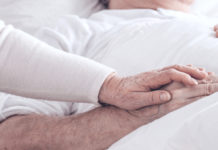Especially with the expansion of caregiving, more and more seniors are staying at home. While keeping seniors at home reduces healthcare costs and enhances quality of life, keeping them safe is imperative to reap those benefits. And on average, caregivers spend 24.4 hours a week providing care to their loved one, while one quarter spends 41 hours or more. Whereas caregivers can keep a closer eye when they provide in-home care, these elderly home safety tips can offer a peace a mind when a provider is not there around the clock.
General Home Senior Safety
These senior safety tips are general and may be applied across the entire household:
Doorways
Keep the clearing of doorframes as smooth and seamless as possible. Additionally, a 32-inch threshold accommodates most wheelchairs and may be as simple as prying off the hinges and taking off the door. A marked consideration also includes the primary home entrance, as they may continuously welcome visitors. Be sure to keep such areas clear and free of clutter.
Lighting
Increased lighting allows for better visuals of surroundings and limits the risk of potential falls. Installing nightlights can further offer light during dim early mornings or dark nighttime hours, especially when using the restroom in the middle of the night.
Flooring
Eliminating clutter and maintaining clear floors decreases stumbles and falls. Cords laying on the floor poses a risk for not only seniors, but for anyone. Additionally, verify that rugs are laying flat on the floor or removed as needed. Move boxes, tables, etc. from high-traffic home areas, especially in hallways.
Stairways
If possible, keep seniors on the main level, as stairs pose great risk to seniors. But if their use is inevitable, add a second railing or wheel-chair ramp as needed. Painting the steps with a bright color can help differentiate the individual steps with an outdoor, more abrasive paint can offer a non-slick surface.
Drug Safety
Review medications and assort them based on required use. Offering seniors a convenient dispenser and sounding reminder can facilitate medication compliance, which can support both physical and mental function.
Alarm System
An abundance of medical alarms offers caregivers more comfort when they are absent. Additionally, install and verify that smoke detectors are actively working on a regular basis.
Bathroom Safety for Elderly
Bathrooms are one of the riskiest areas for seniors to fall, mostly related to slick surfaces and tight corridors. Offer seniors a sense of security and reduce the likelihood of falling with:
Railings
Install railings and grab bars next to toilets and bathtubs, as doing so can offer them mental security and safer shifting throughout the bathroom.
Nonslip Mats
The bathroom comes with many slippery surfaces, especially in the bathtub. Place nonslip mats mostly in or around the shower and near the sink where water may inhabit.
Bathtubs
A sturdy seat and handheld shower nozzle can also offer safety, especially in slippery bathtub areas. Keeping soaps within reach can also reduce extended range of motions that may lead to an unnecessary fall.
Toilet Seats
Common toilet seats are set fairly low to the ground and requires strength to comfortably sit on it. Although grab bars can assist in toilet safety, a raised seat can reduce the amount of squatting required.
Kitchen Safety
Compared to other primary rooms, kitchens may seem a little less threatening. However, the following considerations still deserve large attention:
Cabinets
Keep commonly used items on the lowest cabinet shelf to prevent overextending and climbing. Offer a single step if necessary, but only if the senior has noticeable balance and strength to use it.
Drawers
Be sure to close all drawers when not in use, while also locking them if appropriate. Additionally, keep all sharp knives in a secured drawer.
Nonslip Mats
Offering a nonslip mat, especially around the kitchen sink, can reduce the risk of sliding while maneuvering in the kitchen.
Corners
Especially if seniors use the kitchen counter for safe guiding, they run the risk of hitting the edges. Stay cautious of sharp corners and round them off if at all feasible.
Plug-Ins
Although this holds true throughout the entire house, plug-ins are largely used in the kitchen. Place covers over socket covers and unplug appliances when not in use.
Personnel Support
Although family caregivers are nothing short of admirable, it is absolutely passable to delegate other duties. Especially if a medical condition is present, an in-home nurse can be highly valuable to assist in associated health procedures and tasks. Offering seniors physical therapy can further maintain or improve seniors’ balance and strength. And for all cooking and nutrition needs, look to Silver Cuisine. Silver Cuisine delivers nutritious meals straight to seniors’ doorsteps without the extensive need of grocery shopping, meal prepping, and kitchen cleaning! All required is simple ordering and a short time to heat in the microwave! Find more information on Silver Cuisine here.






